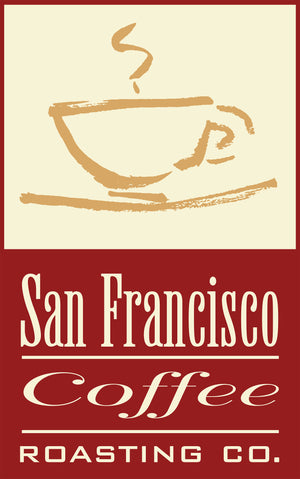Even if you haven't dedicated your life to coffee the way I have, if you're reading this, coffee is probably a big part of your life. And who could blame you? According to the National Coffee Association, 7 in 10 Americans drink coffee every week, and some 62% drink it every single day. (No data on how many drink four cups a day like this coffee fiend).
In any event, coffee is an undeniable part of American culture, but it hasn't always been that way. Just how did coffee find its place among apple pie and hot dogs as a true American favorite? Time for a sip of history…

Early Roots
The coffee plant, and the caffeinated beverage it yields, originated long ago in Ethiopia. For centuries, coffee was a beloved but fairly niche product enjoyed only by those who lived in North Africa and Arabia. It wasn't until the early fifteenth century, when an Indian pilgrim named Baba Budan left Mecca with a personal supply of coffee beans, that the plant found a home in the Indian sub-continent.
Soon after, in around 1616, the Dutch founded the first European controlled coffee estate in Sri Lanka. When they brought the irresistible beans back to Europe, it didn't take long until competing powers opened their estates across the world. While the Dutch continued growing coffee in the Indies, the French launched plantations in the Caribbean, the Spanish in Central America, and the Portuguese in Brazil. By the mid-1600s, coffeehouses had opened in London, Paris, and across Italy. They were spaces that nurtured the artists, writers, and intellects of the age.

Land of the You, Land of the Me
By the mid-seventeenth century, coffee found its way to North America, where colonists enjoyed the buzzy beverage with breakfast and as an afternoon pick-me-up. But tea remained the most popular brew in the British colonies until the wild times of the 1700s.
In 1773, American patriots staged the infamous Boston Tea Party, throwing crates of British tea into the harbor in revolt against taxation. Soon after, many Americans switched from tea to coffee as a way to show their opposition toward the British monarchy.
Coffee only continued to rise in popularity in the nineteenth century, especially during the American Civil War. No, these soldiers weren't exactly drinking almond milk lattes. But hot coffee was an invaluable battlefield provision, serving both as a stimulant and an appetite suppressant when rations were in short supply.
In 1864, brothers John and Charles Arbuckle had the brilliant idea of selling pre-roasted coffee by the pound. These Pittsburgh-based moguls soon hit it big by selling canned coffee to pioneers and ranchers out west. Meanwhile, one James Folger found a market among California gold miners, and brands like Maxwell House and Hills Brothers became household names.
During the First World War, the international coffee trade faced a massive disruption, when transporting coffee from the equator to the far reaches of Europe became nearly impossible. For that reason, the United States emerged as the world's most voracious coffee consumer by 1922. Years later, during World War II, coffee was rationed to the American public so it could be reserved for US soldiers fighting abroad. And just as soldiers relied on their daily pick-me-up during the Civil War, American GIs once again found solace in their morning cup of joe.
Modern Era
Following World War II, the American economy experienced an amazing revival, where consumer goods of all kinds became readily available. From diners to supermarkets to the workplace, coffee had become ubiquitous in the States by the 1950s. But you shouldn't take that to mean it tasted any good.
Most Americans were still drinking instant coffee at the time. You know, that pathetic watery excuse for the real stuff. But in the 1960s, west coast roasters like Alfred Peet, who recognized the diversity of flavors to be found in these magic beans, started experimenting with specialty coffee. Soon, as a result of this movement, the first Starbucks opened in Seattle in 1971. And both Peet's and Starbucks began to expand throughout the US, giving everyday Americans a taste for espresso drinks, as well as the communal coffeehouse experience.
As for me, (and as you know if you've been following the blog) I discovered the artistry and alchemy of coffee making in the 1990s while hanging out at Bay Area coffeehouses. Though I'd grown up drinking from my parents' Mr. Coffee machine, it wasn't until my early adulthood in San Francisco that I fell in love with real, expertly crafted coffee.
Thirty years later, we couldn't be prouder to help America scratch its coffee itch at San Francisco Coffee Roasting Company...and the rest, as we say, is history. Here's to the future!


